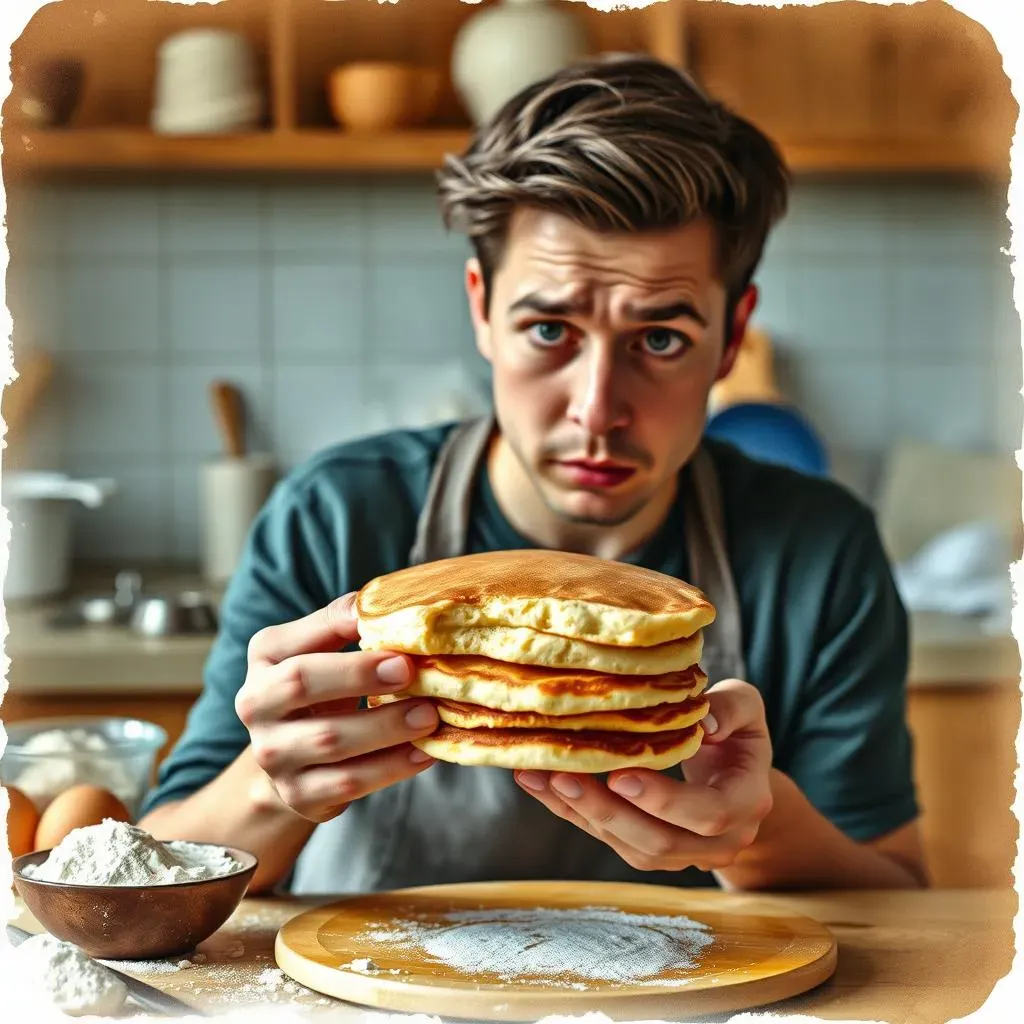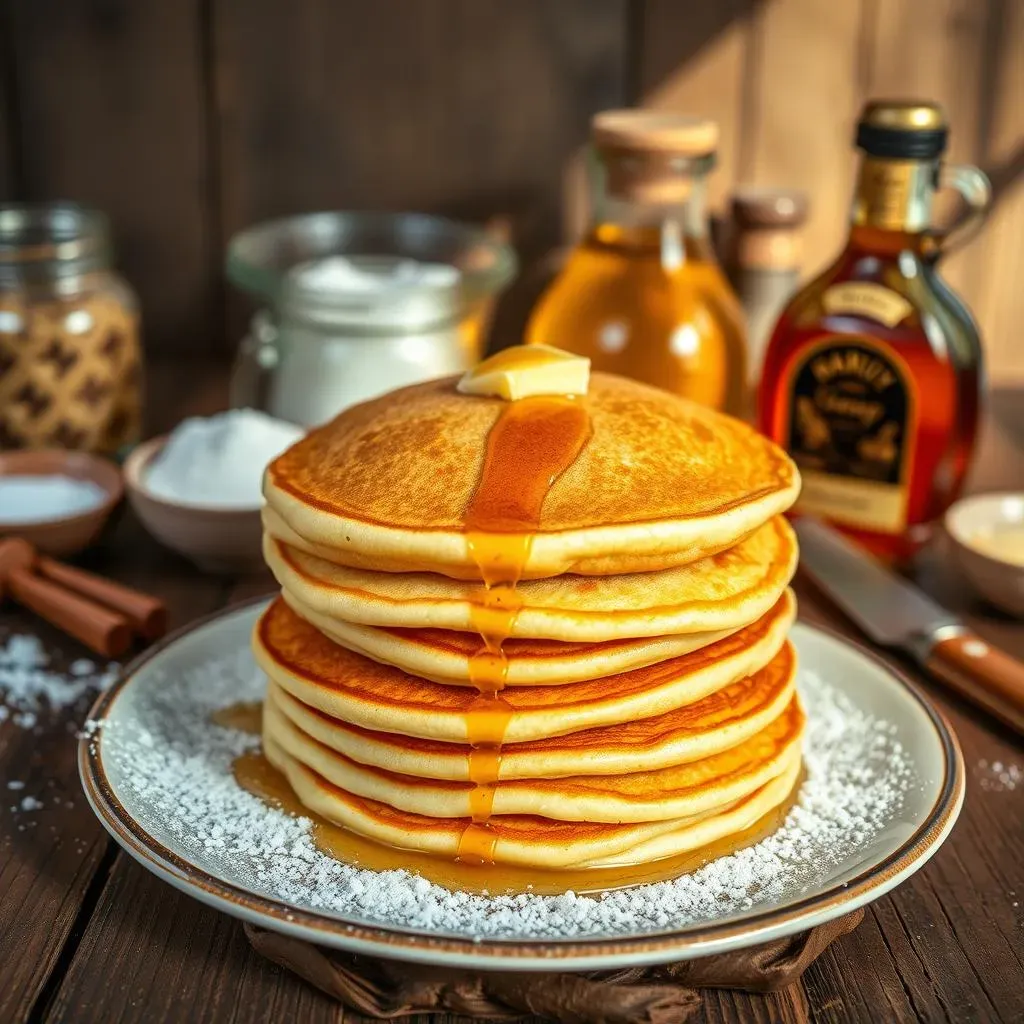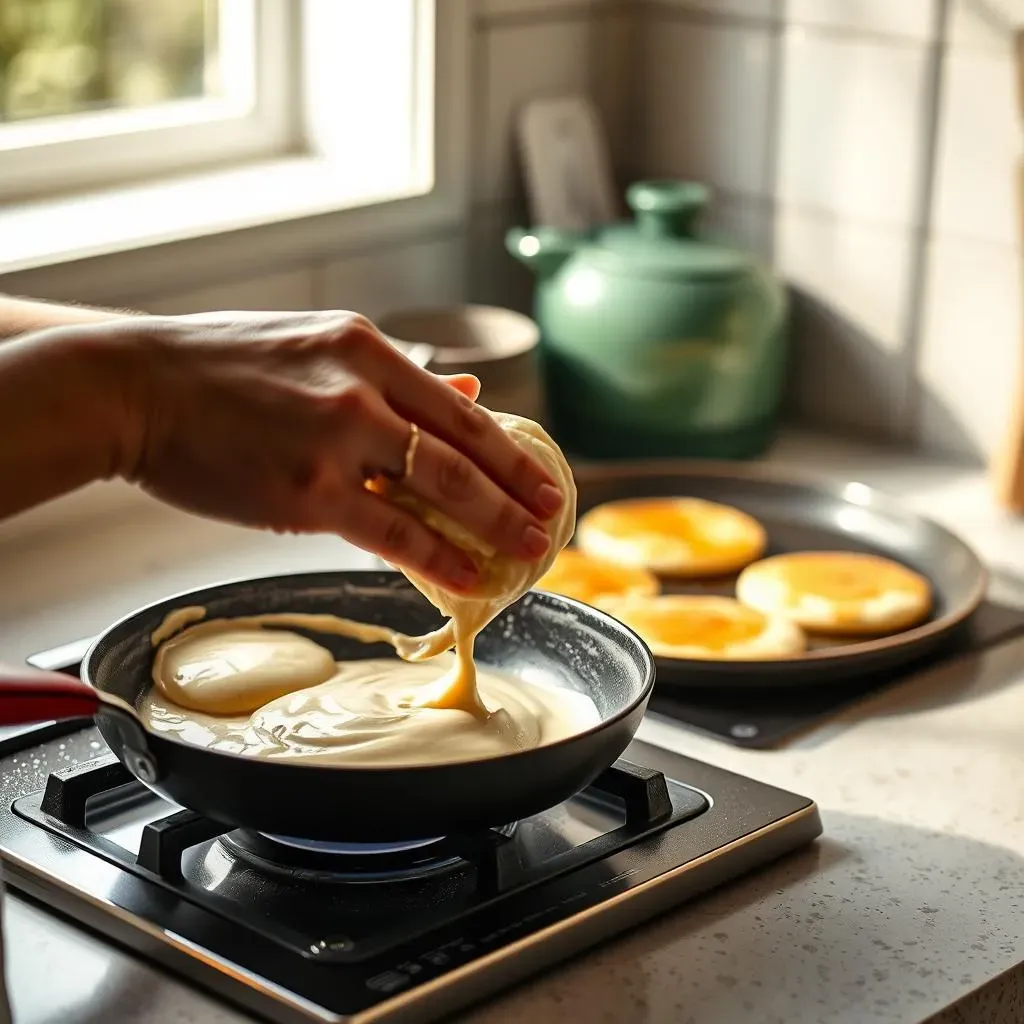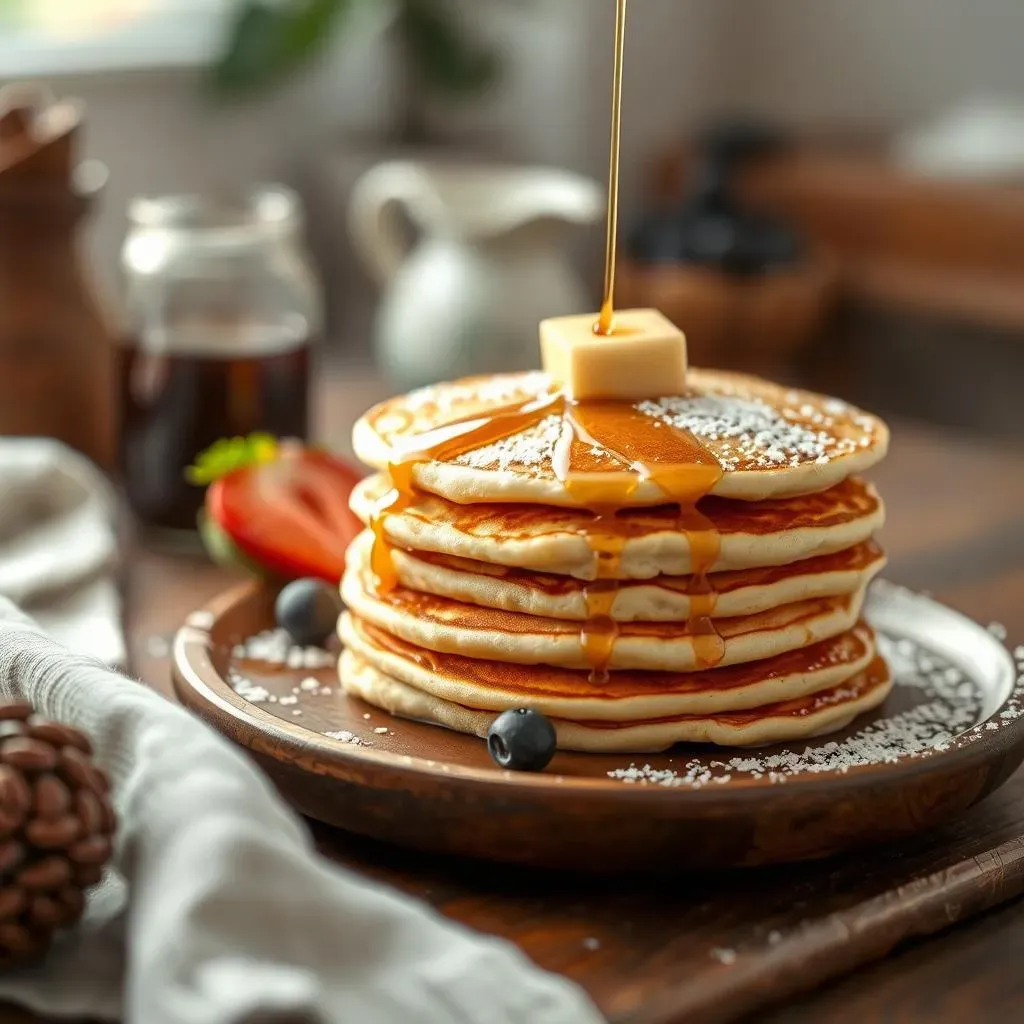Table of Contents
Ever made healthy pancakes, only to be met with a dense, disappointing disc instead of a fluffy delight? You're not alone! Many people struggle with achieving that perfect light and airy texture when using healthier ingredients. This article tackles the frustrating question: "why are my healthy pancakes dense?" We'll explore the common culprits behind this pancake predicament, from ingredient choices to mixing techniques and cooking methods. We'll investigate how different flours, sweeteners, and even your mixing style can impact the final result. We'll also dissect the critical role of cooking temperature and pan preparation. But don't worry, this isn't just a problem-solving session; we'll arm you with practical, actionable tips and tricks to transform your dense pancakes into light, fluffy, and utterly delicious healthy versions. Get ready to unlock the secrets to achieving the perfect healthy pancake every time!
Why Are My Healthy Pancakes Dense? Common Culprits

Why Are My Healthy Pancakes Dense? Common Culprits
The Flour Factor: Whole Wheat Woes?
Let's start with the flour. Whole wheat flour, while nutritious, absorbs more liquid than all-purpose flour. This extra absorption can lead to a denser pancake. Think of it like this: the whole wheat particles are like tiny sponges, soaking up all the moisture, leaving less to create those lovely air pockets that make pancakes fluffy. Using too much whole wheat flour compared to other ingredients can definitely weigh down your pancakes. You might need to adjust the liquid in your recipe to compensate; start with a little less and gradually add more until you get the right consistency.
Another thing to remember is that different brands of whole wheat flour vary in their absorption rate. Experiment to find the perfect amount of liquid for your preferred brand.
Flour Type | Liquid Absorption | Pancake Texture Impact |
|---|---|---|
All-Purpose | Moderate | Generally light and fluffy |
Whole Wheat | High | Can be dense if too much is used or liquid isn't adjusted |
Oat Flour | High | Can be dense and slightly gummy; best in blends |
Leavening Agent Limitations: Baking Powder Blues
Next up, let's talk about leavening agents—the magic ingredients that give your pancakes their lift. Baking powder is the usual suspect, responsible for creating those airy bubbles. However, if your baking powder is old or if you haven't used enough, your pancakes might be flat and dense. Old baking powder loses its potency, so always check the expiration date. Also, make sure you're using the correct amount as specified in your recipe; don't be shy with it!
Sometimes, even with fresh baking powder, the recipe itself might be lacking. Consider adding a touch more baking powder to your recipe if you're consistently getting dense pancakes. But don't overdo it, as too much baking powder can lead to a bitter taste.
- Check your baking powder's expiration date.
- Measure baking powder accurately using a scale or measuring spoons.
- Experiment with slightly increasing the amount of baking powder (within reason) in your recipe.
Overmixing Mayhem: Gluten's Grip
Finally, let's address the often-overlooked culprit: overmixing. Overmixing develops the gluten in your flour, resulting in tough, chewy pancakes. Gluten is a protein that creates elasticity in dough, but in pancakes, too much gluten leads to density. The key is to gently combine the wet and dry ingredients until just moistened. A few lumps are perfectly acceptable; in fact, they're desirable! Aim for a slightly lumpy batter, not a perfectly smooth one. Resist the urge to overmix; the less you stir, the fluffier your pancakes will be.
Think of it like this: overmixing is like squeezing all the air out of a balloon. You want to keep those air bubbles intact to achieve that light and airy texture. Gentle mixing is key!
Ingredient Issues: Flour Power, Sweetener Snafus, and More

Ingredient Issues: Flour Power, Sweetener Snafus, and More
Okay, so we've tackled flour and leavening agents. Now let's dive into other ingredients that can sabotage your fluffy pancake dreams. Sweeteners, for example, can play a sneaky role. Too much of a dense sweetener like honey or maple syrup can weigh down your batter, leading to denser pancakes. These sweeteners are delicious, but they also have a higher density than granulated sugar. Think of it like trying to make a fluffy cloud out of lead weights – it's just not going to happen! Use them sparingly, or consider using a lighter sweetener like stevia or erythritol, though be aware of the potential for aftertaste.
Another ingredient to watch out for is the type of liquid you use. Milk, for instance, adds moisture and richness, but using too much can result in a denser pancake. If you're using a milk alternative like almond milk or coconut milk, make sure you choose a version that doesn't add a lot of extra thickness. You might need to experiment to find the perfect amount of liquid for your chosen ingredients and recipe.
Sweetener | Density | Pancake Impact |
|---|---|---|
Granulated Sugar | Low | Generally good for fluffy pancakes |
Honey | High | Can lead to denser pancakes if overused |
Maple Syrup | High | Similar to honey, use sparingly |
Beyond sweeteners and liquids, other ingredients can affect the texture of your pancakes. For instance, adding ingredients like mashed banana or applesauce, while adding nutrients and flavor, also adds moisture and weight. These additions are fantastic for healthy pancakes, but you might need to adjust the amount of flour or liquid to compensate for their moisture content. It's all about finding the right balance!
Finally, don't forget about the fats! While fats add richness and flavor, too much can make your pancakes heavy and greasy. Oils like coconut oil and olive oil are healthy, but they contribute to density. Consider using a lighter oil, or reducing the amount called for in your recipe, particularly if you are already using other moist ingredients. Experiment to find the optimal amount that delivers flavor without sacrificing fluffiness.
- Use less honey or maple syrup than the recipe suggests, or substitute a lighter sweetener.
- Adjust the liquid amount based on the moisture content of your added ingredients (like banana or applesauce).
- Reduce the amount of oil if using a heavier oil like coconut or olive oil.
Technique Troubles: Mixing Mistakes and Cooking Conundrums

Technique Troubles: Mixing Mistakes and Cooking Conundrums
Mixing Mayhem: The Gentle Approach
Let's move on to the technique side of things. Even with perfect ingredients, improper mixing can lead to dense pancakes. As we discussed earlier, overmixing is the enemy! Remember that slightly lumpy batter? That's your friend. It means you've avoided overdeveloping the gluten in your flour, which would create a tough, chewy texture. Instead of vigorously whisking or blending, use a gentle folding motion to combine wet and dry ingredients. Think of it as a delicate dance, not a wrestling match. The goal is to just moisten the dry ingredients; don't strive for a perfectly smooth batter.
Another common mistake is not properly incorporating the leavening agent. Make sure it's evenly distributed throughout the batter to ensure consistent rising and to prevent pockets of flatness. A few gentle stirs after adding the baking powder will do the trick. Don't over-stir, just enough to ensure even distribution. This will make a world of difference in the final product!
Mixing Technique | Result |
|---|---|
Vigorous whisking | Tough, chewy pancakes |
Gentle folding | Light and fluffy pancakes |
Uneven leavening agent incorporation | Unevenly cooked, dense areas |
Cooking Catastrophes: Temperature and Timing
Now, let's talk about cooking. The temperature of your pan is crucial. Too low, and your pancakes will absorb too much oil and become greasy and dense. Too high, and they'll burn on the outside before cooking through on the inside. Aim for medium heat—a temperature where you see a few bubbles forming around the edges of the batter when you pour it onto the pan. This indicates that the pan is hot enough without being scorching.
Timing is also essential. Don't flip your pancakes too soon; they need time to set and cook through before flipping. A good rule of thumb is to flip them when bubbles start to form on the surface and the edges look slightly set. Don't press down on them while they're cooking; let them cook naturally. Pressing down forces out the air, resulting in flat, dense pancakes. Patience is key here—it's a marathon, not a sprint!
- Use medium heat for even cooking.
- Don't flip too early; wait for bubbles and slightly set edges.
- Avoid pressing down on the pancakes while cooking.
Healthy Pancake Hacks: Tips for Light and Fluffy Healthy Pancakes

Healthy Pancake Hacks: Tips for Light and Fluffy Healthy Pancakes
Mastering the Mix: The Secret to Fluffy Healthy Pancakes
Let's face it: achieving fluffy healthy pancakes often requires a bit of finesse. One crucial aspect is mastering the art of the mix. Remember, we've already discussed the dangers of overmixing, but let's delve a little deeper. The key is to gently combine the wet and dry ingredients, ensuring that the dry ingredients are just moistened. Don't aim for a completely smooth batter; a few lumps are perfectly acceptable. These lumps are actually your friends, trapping precious air pockets that contribute to fluffiness. Think of it as creating tiny air balloons within your batter. These air balloons expand during cooking, creating those light, airy pancakes you crave!
Another important tip is to let your batter rest for a few minutes before cooking. This allows the gluten to relax slightly and the baking powder to fully activate. This resting period helps create a more even rise and prevents dense spots. Don't skip this step; those few minutes of patience can make all the difference. While your batter rests, you can prep your pan or gather your toppings – multi-tasking is key to pancake perfection!
- Gently fold wet and dry ingredients until just combined.
- Allow the batter to rest for 5-10 minutes before cooking.
- Don't overmix; a few lumps are fine!
Cooking Like a Pro: Temperature Control and Beyond
Now, let's talk about cooking techniques that can elevate your healthy pancake game. Maintaining a consistent cooking temperature is crucial. Medium heat is your best friend here. It ensures even cooking and prevents burning while still allowing the pancakes to cook through nicely. Avoid high heat; it will cook the outside before the inside has a chance to set, resulting in a dense, undercooked center. Always let the pan heat up properly before adding the batter, and don't overcrowd the pan. Overcrowding prevents even cooking and can lead to steam buildup, which can flatten your pancakes.
Finally, don't forget the importance of using a good quality non-stick pan. A non-stick surface prevents sticking and ensures easy flipping, which helps maintain those precious air pockets. Proper pan preparation is also essential. Lightly grease the pan with oil or butter before adding the batter. This prevents sticking and ensures that your pancakes slide easily off the pan, keeping their shape and preventing breakage – which could lead to dense, irregular pancakes.
Cooking Tip | Benefit |
|---|---|
Medium heat | Even cooking, prevents burning |
Don't overcrowd the pan | Allows for even heat distribution |
Use a non-stick pan | Easy flipping, prevents sticking |